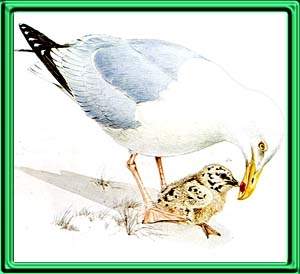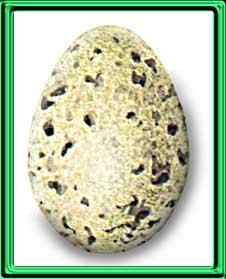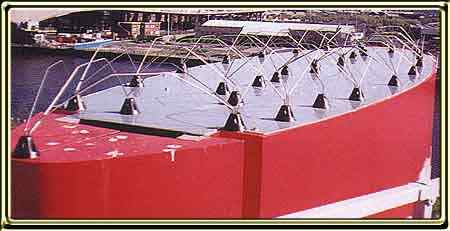
Larus argentatus
(The Herring Gull)
This is the one that everybody knows, it is a very familiar bird to everyone who travels on steamers and and those who live anywhere near the coast.
They have increased enormously during this century having first bred in 1904 on the Isle of Walney just off the coast of Barrow-in-Furness in Cumbria. By 1934 there were just 35 pairs breeding but by 1964 there were between 10,000-20,000 pairs...these are busy birds..! These days the Herring Gull breeds everywhere from Central London to north of Scotland.
The plumage is white with a grey mantle, black wing tips with white "mirrors", flesh pink legs, and yellow bill with a red spot. Chicks peck at the red spot on the yellow bill which in turn encourages the parents to feed them, studies have shown that the red spot on the yellow bill is the best colour combination and promotes the most pecks from the chicks...isn't Mother Nature clever. Flat forehead and large bill give "mean" appearance.

The plumage of the immature bird is mottled with brown with the white and grey not being attained until the fourth or fifth year. The eyes are a pale yellow at all ages.
Biology:
Size: 21 to 22 inches long. Wingspan of 55 inches.
Habitat: Coasts, inland areas, tips, towns and cities.
Nest: Constructed as a large tangle of grass or seaweed on a cliff ledge or grassy side of a sloping cliff, however now known to nest in coastal towns and cities on factory roofs and large buildings using various nesting materials.
Eggs: Lays three to five eggs as shown below. Breeds late April onwards. Both parents incubate and tend the young who fly after about 6 weeks.
Food: Anything from scraps at a picnic to whatever they can get off a rubbish tip to shellfish, crustaceans,carrion, nestlings, eggs, and following the plough they get worms, grubs and many pests from the fields.
Control:
This is quite difficult, though there are now Gull control systems:
Gullguard
The system pictured above, a new innovation, (picture and information courtesy of Pest Control News(Killgerm)), was installed on the Scottish Daily Record sign in front of their new premises in Glasgow. The sign is the largest of it's type and the inventor of the system (Tony Legge) designed this application. Gullguard is a defence system specifically designed to deter seagulls in urban areas by obstructing their wingspan and takeoff run. Gullguard is obtained exclusively from Killgerm and Network Pest Control as is also more information on the system.
Other systems can be used from wire (Avistrand) to point system (E-Coppic and Avipoint) and netting but it is dependant upon the degree of bird pressure that you are dealing with. Refer to Network Pest Control Systems site which offers full information.
Law:
The law on birds varies from country to country and definite identification must be ensured before doing any work. The only gulls which may be controlled in Britain are:
Herring Gull
Lesser Black Backed Gull
Greater Black Backed GullOther birds such as the Kittiwake and the Fulmar are protected, consequently they cannot be touched or disturbed during the breeding season, so be warned. Copies of the Law are available from Government Offices, Killgerm and Network Pest Control Systems.


